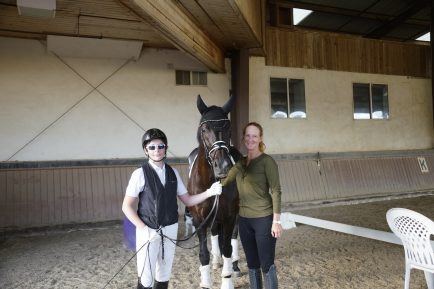Any equestrian vacation, especially one involving long-distance travel, represents a considerable investment of time and money. That’s one reason to go with an established tour provider: They have years of experience in the field, they’ve checked out the local contractors, they provide references on request, and they will help to negotiate disputes with outfitters. That doesn’t mean you can’t make your own travel arrangements; there are lots of wonderful destinations out there, and not all make it into the catalogs.
Whatever approach you take, be a smart consumer: Ask lots of questions, talk to riders who have been there, and get the details in writing before you go. Here are some of the basic elements of an equestrian vacation.
- Tack and gear: Western gear is customary on ranches and pack trips in the United States and Canada, but in most other parts of the world, English saddles (or a local equivalent) are the norm. Hard hats, though not always required, are strongly recommended.
- Horses: Foreign tours usually feature the native horses of the region: Arabians in Egypt, Andalusians in Spain, Welsh Cobs in Wales, and so on. Quarter Horses, Appaloosas and mustangs are common on American ranches. English-style instructional programs tend to rely on Thoroughbreds, warmbloods and hunters of various types.
- Transportation: In general, you are responsible for getting to and from your “gateway” city. Most vacation packages begin when you arrive at the tour’s starting point. One night’s lodging in a hotel and transfers from the nearest airport may be included, but you’ll need to arrange your own flights.
- Food and lodging: Lifestyle (what riders eat and where they sleep) tends to be the biggest variable of riding vacations. Options run from campfire cooking to simple tents to gourmet dining and deluxe, five-star resort accommodations. If private baths, daily towel changes and the like are important to you, ask about them in advance.
- Liability and insurance: Risk is a factor in any riding trip. You will be asked to sign a waiver when you make your reservation. Accident, liability and health insurance are your responsibility; check with your provider to make sure you are adequately covered. Personal travel insurance-required by some providers-is a good idea; most companies will refund only a portion of your payment if you cancel, and then only with 30 to 60 days’ advance notice.
- Price: Horseback holidays don’t come cheap. Prices for trail-riding programs vary according to the time of year, the location, the length of the trip, the sophistication of the accommodations, and the number of riders in the group. Typical per-person rates for a one-week vacation (not including airfare) range from $1,000 to $2,500 for a riding tour in Europe or South America; $950 to $1,500 for a trail-riding or ranch vacation in the United States. Longer Asian “treks” can cost as much as $3,200. The average one-week instructional program, here or abroad, costs $1,200 to $1,500 (some allow shorter stays at a daily rate). Prices are based on double occupancy; solo travelers pay a supplement. Some programs will match you with a roommate on request.
Original article: Planning a Holiday on Horseback (equusmagazine.com)
royalequestriancollection.com – check our website to purchase and enjoy our products for your horses and you.

























